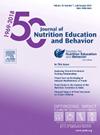对2022年美国婴儿配方奶粉短缺的种族和民族反应。
IF 2.3
3区 医学
Q2 EDUCATION, SCIENTIFIC DISCIPLINES
引用次数: 0
摘要
目的:使用家庭脉搏调查数据,按种族/民族描述2022年18个月以下婴儿的家庭中婴儿配方奶粉短缺的经历和反应。方法:结果包括家庭是否受到短缺的影响,如果是,3个非互斥反应类别(增加母乳,非典型地获得配方奶,破坏性应对[中断母乳和/或配方奶])和1个互斥反应类别(仅破坏性应对)。未调整的股票报告各自使用t检验进行比较。采用调整家庭特征和固定效应的回归来检验种族/民族与结果之间的关系。结果:随着配方奶粉供应的改善,受短缺影响的股票随着时间的推移而下降。我们发现种族和民族与受短缺影响的报告之间没有联系。在受影响的家庭中,非西班牙裔黑人家庭比非西班牙裔白人家庭更有可能报告破坏性应对(P = 0.03)。结论和影响:短缺可能扩大了婴儿喂养方式的种族/民族差异。宣传婴儿喂养行为、改善配方奶粉的获取和/或增加援助计划的参与,可以针对那些最有可能受到意外短缺影响或最有可能采取破坏性应对行为的人。进一步的研究可以检查短缺的地理差异及其对婴儿喂养行为和母婴健康的长期影响。本文章由计算机程序翻译,如有差异,请以英文原文为准。
Responses to the 2022 Infant Formula Shortage in the US by Race and Ethnicity
Objective
Describe experiences of, and responses to, 2022 infant formula shortages among households with infants aged up to 18 months by race/ethnicity using Household Pulse Survey data.
Methods
Outcomes included whether households were affected by shortages and, if so, 3 nonmutually exclusive response categories (increased breastmilk, obtained formula atypically, and disruptive coping [disruptions to breastmilk and/or formula]) and 1 mutually exclusive response category (solely disruptive coping). Unadjusted shares reporting each were compared using t tests. Regressions adjusting for household characteristics and fixed effects were used to examine associations between race/ethnicity and the outcomes.
Results
Shares affected by shortages declined over time as the formula supply improved. We found no association between race and ethnicity and reports of being affected by a shortage. Among affected households, non-Hispanic Black households were more likely to report disruptive coping than non-Hispanic White households (P = 0.03).
Conclusions and Implications
Shortages may have widened racial/ethnic differences in infant feeding practices. Efforts to inform about infant feeding behaviors, improve access to formula, and/or increase participation in assistance programs could be targeted to those most likely to be affected by unexpected shortages or most likely to resort to disruptive coping behaviors. Further research could examine geographic variation in shortages and their long-term effects on infant feeding behaviors and infant and maternal health.
求助全文
通过发布文献求助,成功后即可免费获取论文全文。
去求助
来源期刊
CiteScore
4.20
自引率
11.50%
发文量
379
审稿时长
44 days
期刊介绍:
The Journal of Nutrition Education and Behavior (JNEB), the official journal of the Society for Nutrition Education and Behavior, is a refereed, scientific periodical that serves as a global resource for all professionals with an interest in nutrition education; nutrition and physical activity behavior theories and intervention outcomes; complementary and alternative medicine related to nutrition behaviors; food environment; food, nutrition, and physical activity communication strategies including technology; nutrition-related economics; food safety education; and scholarship of learning related to these areas.
The purpose of JNEB is to document and disseminate original research and emerging issues and practices relevant to these areas worldwide. The Journal of Nutrition Education and Behavior welcomes evidence-based manuscripts that provide new insights and useful findings related to nutrition education research, practice and policy. The content areas of JNEB reflect the diverse interests in nutrition and physical activity related to public health, nutritional sciences, education, behavioral economics, family and consumer sciences, and eHealth, including the interests of community-based nutrition-practitioners. As the Society''s official journal, JNEB also includes policy statements, issue perspectives, position papers, and member communications.

 求助内容:
求助内容: 应助结果提醒方式:
应助结果提醒方式:


